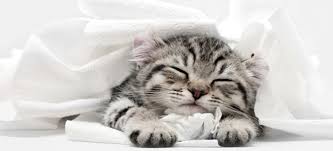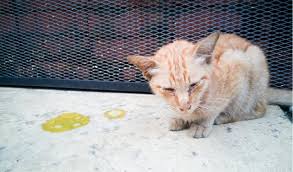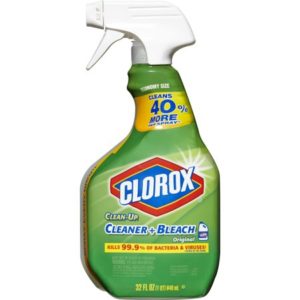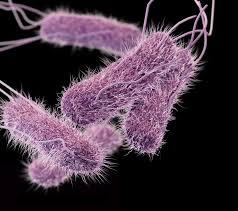Salmonella in Cats

Salmonella is the bacterium behind enteritis or salmonellosis in cats and lodges itself in their intestinal tracts. Cats typically contract the infection from the saliva or feces of other infected animals, or from ingesting contaminated meat or foods.
Rarely seen in cats and seldom causing complications, most cats will simply remain carriers of the bacteria without exhibiting any clinical signs. However, kittens and cats with weaker immune systems are more likely to present symptoms, while the infection itself can be shed, thereby INFECTING other pets and people.
The incubation period is between two and four days with symptoms appearing AFTER this time. These symptoms include chronic vomiting, chronic diarrhea (the feces may become very liquid and kitty may eliminate in unusual places, not in her litter box), swelling of the lymph nodes, elevated fever, lack of appetite and weight loss, a general state of weakness, lethargy, enlarged liver (only in advanced infections), and abortion in pregnant cats.
Only bacterial cultures and rectal swabs taken by your vet can determine whether your cat’s symptoms are indicative of salmonella or another type of bacterial infection altogether. Once the precise source is identified, antibiotic treatment will be started immediately, while in kittens or severely dehydrated cats, IV fluids may also be added. Following the treatment, your cat MUST be tested to see if she’s shedding the bacteria – either through her saliva or feces.
 Because the salmonella bacteria can be so easily transmitted to humans, and because most cats are asymptomatic carriers, it’s essential that cat guardians avoid direct contact with their cat’s feces and saliva. Since bleach has the power to kill the bacteria, keep her environment scrupulously clean by using it weekly on such items as her litter box and tray, her food and water bowls, and the toys that she chews on. Always rinse them thoroughly in soapy water and dry them before allowing her access to them again.
Because the salmonella bacteria can be so easily transmitted to humans, and because most cats are asymptomatic carriers, it’s essential that cat guardians avoid direct contact with their cat’s feces and saliva. Since bleach has the power to kill the bacteria, keep her environment scrupulously clean by using it weekly on such items as her litter box and tray, her food and water bowls, and the toys that she chews on. Always rinse them thoroughly in soapy water and dry them before allowing her access to them again.
Soft furnishings like cat beds and blankets should be put into the washing machine on the hot cycle, then either air dried in full, direct sunlight or misted with a safe disinfectant from a spray bottle, and permitted to dry before your cat uses them again.
And since the salmonella bacteria can also be present in certain meat and fowl, proper cooking by conscientious cat owners at elevated temperatures is essential in order to kill it.

